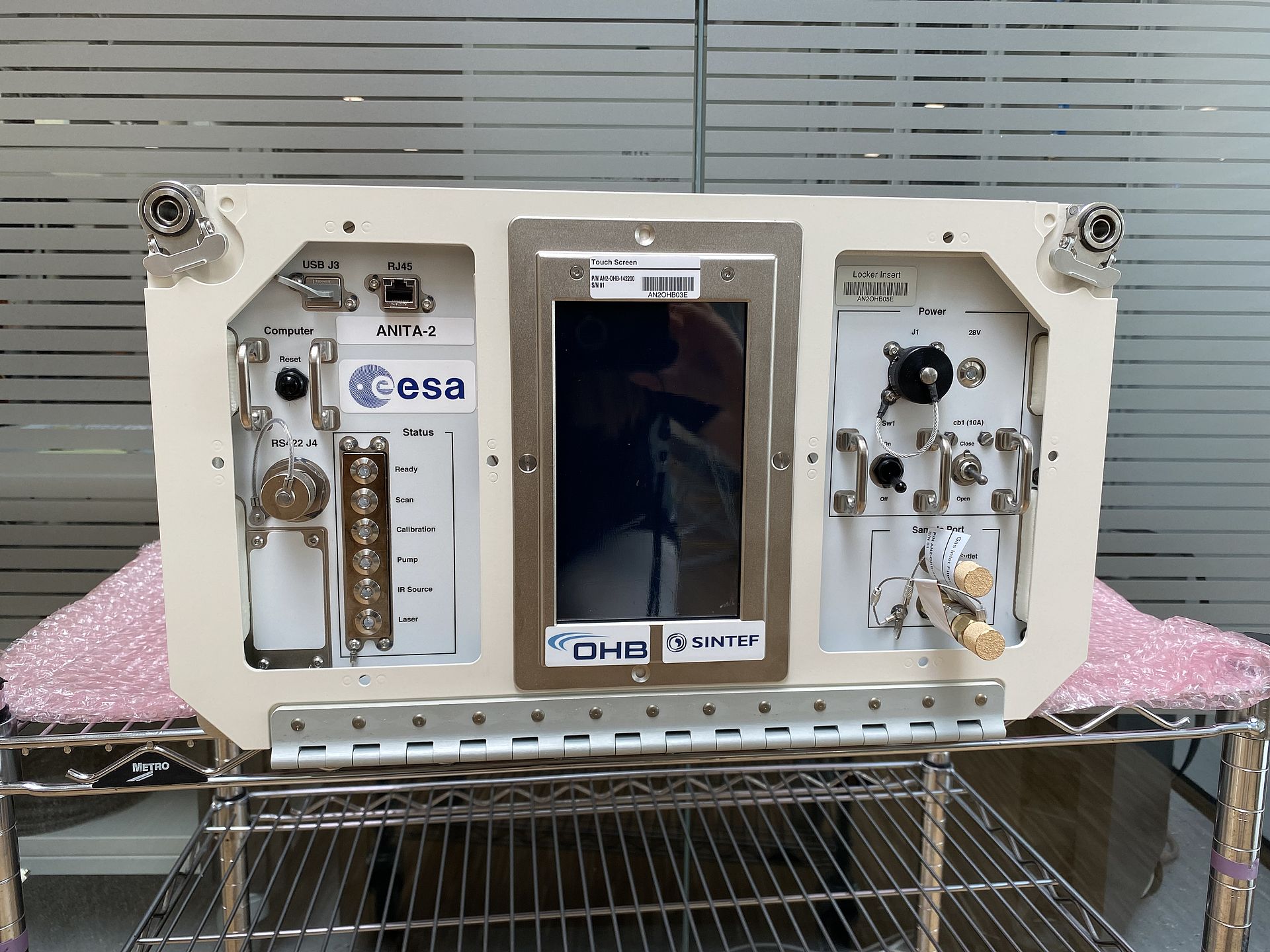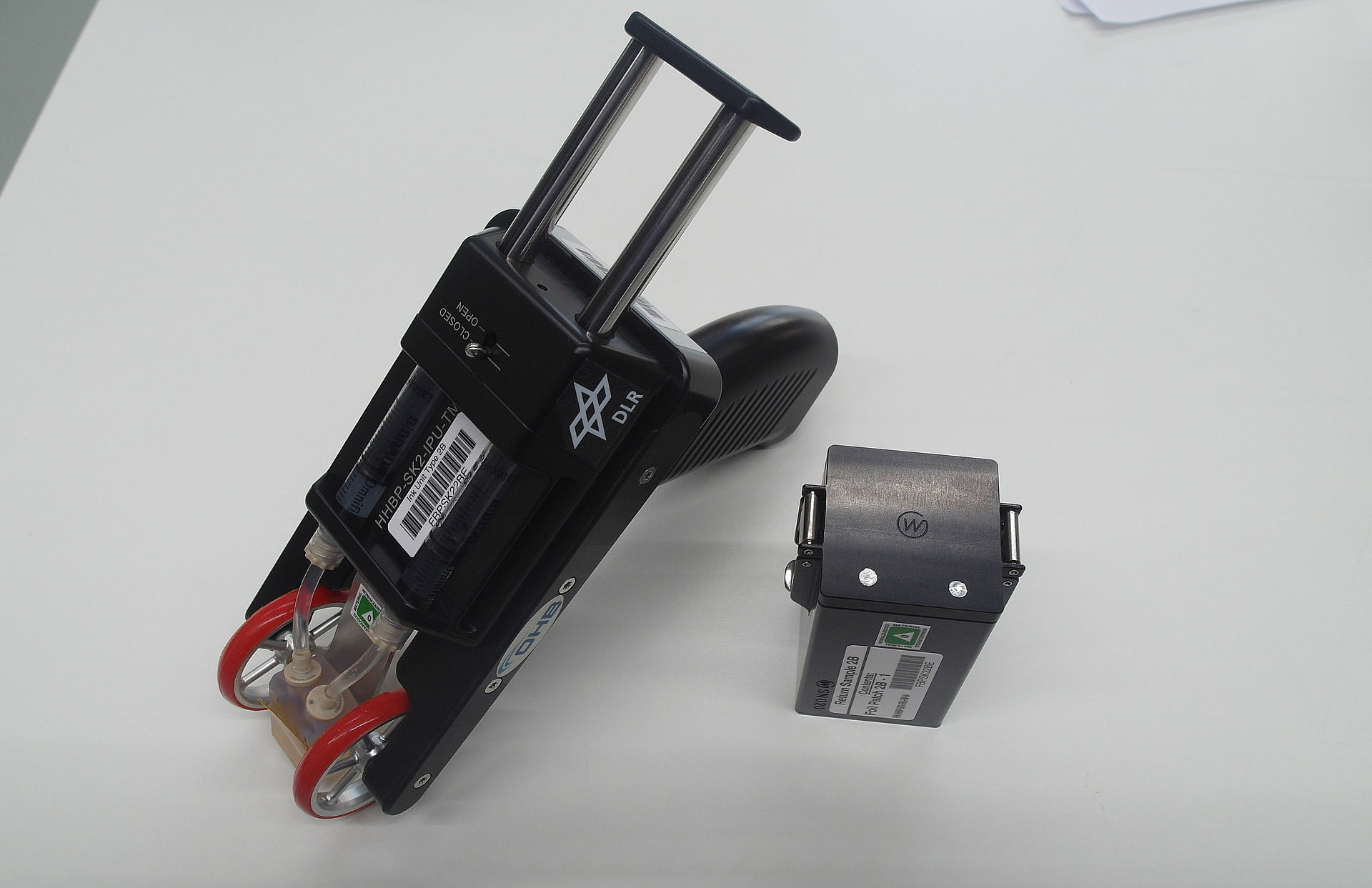
Oberpfaffenhofen/Bremen, December 21, 2021. Bye Bye Anita: Today at 11:07 a.m. (CET), the ANITA-2 (Analysing Interferometer for Ambient Air) lifted off from the Kennedy Space Center, Florida on board a SpaceX Falcon-9 launcher. ANITA-2 is a trace gas monitoring system for the International Space Station (ISS). It has been developed by OHB System AG, a subsidiary of the European space and technology group OHB SE, under contract of the European Space Agency (ESA). ANITA-2’s mission is to yield high precision measurements of the gas atmosphere on board the ISS once every six minutes, measuring more than 35 gases with extremely high accuracy. Also aboard the Falcon-9: The handheld bioprinter to heal skin wounds, developed by OHB System AG.
“For astronauts, good air quality is extremely important for health and performance, and can even be essential for survival, especially for long duration missions to the Moon and Mars. With ANITA-2 the trace gases are identified by measuring minimal optical absorptions in a very wide spectral range, and with only very few limitations”, says Armin Stettner, Head of the Microgravity department at OHB. “Key features are the very low detection limits and the accuracy of the gas analysis results, exceeding other instruments significantly.”
A life-saving technology
ANITA-2 has the capability to automatically recognize unexpected gases. This is of high importance as other gas analysis instruments typically ignore unknown gases. In case of toxic gases, this can easily lead to dangerous situations inside confined enclosed environments such as the ISS or other space vehicles or space stations. “The importance of good air quality in a space environment can’t be overstated: the difference in CO2 levels between my first and second mission is an outstanding example of how the atmosphere we live in can affect our well-being and performance. Accurate monitoring of the atmosphere inside the ISS made it possible to lower the concentration of CO2, greatly improving our daily lives and operations. ANITA-2 is even able to detect extremely low levels of various trace gases simultaneously, and thanks to its high sampling frequency, accuracy and autonomous operation will accompany us into the future, beyond the ISS, as far as we’ll dare to go”, says ESA astronaut Luca Parmitano.
The interferometer inside ANITA-2 is based on the RocksolidTM interferometer from Bruker Optics in Ettlingen, Germany. The development of ANITA-2 started in October 2016 with subcontractors SINTEF in Norway, Frezite High Performance (FHP) and EVOLEO Technologies in Portugal. The installation of ANITA-2 on-board the ISS is planned to be performed in January 2022.
Bioprint FirstAid: The modern plaster for a space environment
The Handheld Bioprinter could be used as a device for treating large superficial skin injuries. It applies a body-identical skin patch to the wound, thus helping it to heal more quickly and effectively. The goal of the “Bioprint FirstAid” experiment is to demonstrate a bioprinting technology with simulated skin cells on board the ISS. The experiment will be done by ESA astronaut Matthias Maurer and is planned for 27th of January 2022. Overall, four different printing-nozzle- and bioink- combinations will be tested under microgravity, resulting in four different samples for a later on-ground analysis after return to earth. The project is under contract of the German Aerospace Center (DLR) in Bonn on behalf of the German Space Agency and funded by the Federal Ministry for Economic Affairs and Energy (BMWi).
Contact for media representatives:
Marianne Radel
Head of Corporate Communications
Phone: +49 421 2020 9159
Email: marianne.radel@ohb.de
Contact for investors and analysts:
Marcel Dietz
Investor Relations
Phone: +49 421 2020 6426
Email: ir@ohb.de

